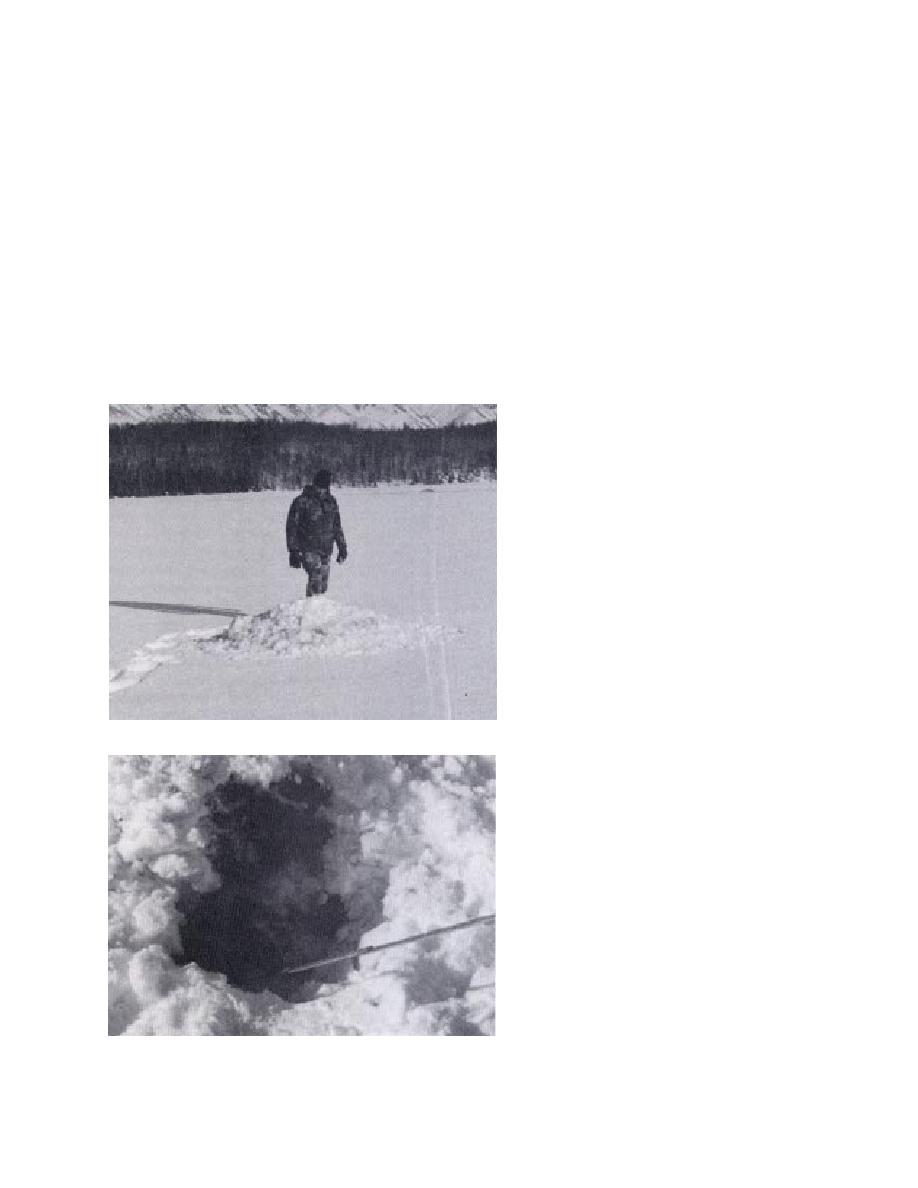
but the ice was not broken or penetrated by the
similar to the 81-mm point-detonating projectiles
explosions (Fig. 8).
but smaller and slightly deeper.
One of the point-detonating projectiles landed
The second and third delay-fused projectiles
on the ice of a shallow pond north of the main
each produced a camouflet, or a hidden crater. The
impact area. The ice cover on the pond was 40 cm
projectiles penetrated the ice cover and the underly-
thick over about 30 cm of water. The crater (no. 1)
ing frozen and unfrozen sediments before explod-
produced by this projectile (Fig. 9) looked no dif-
ing. The confining strengths of the ice, the upper
ferent from the craters (no. 2 and 3) produced by
seasonally frozen sediment and the underlying satu-
projectiles landing on areas of grounded ice over
rated unfrozen sediment allowed the explosion to
frozen ground (Fig. 8).
be confined and prevented it from ejecting mate-
Three delay-fused 81-mm projectiles (no. 46)
rial and producing a surface crater. The only evi-
landed in an area of grounded ice over frozen
dence of the two camouflets was conical mounds of
ground in the center of the test impact area. The
broken ice rubble, one of which measured 0.6 m
cloud produced by the explosion of the 81-mm
high and 2 m in diameter (Fig. 10). Closer inspec-
mortar projectiles was noticeably smaller than that
tion and judicial digging into the mound by the
produced by the 105-mm howitzer projectiles. The
EOD escort revealed a nearly vertical hole 30 cm
crater (no. 4) produced by the first projectile was
in diameter and 1.5 m deep (Fig. 11).
Figure 10. Camouflet formed by a delay-fused
81-mm mortar projectile.
Figure 11. Nearly vertical hole in the camouflet.
9



 Previous Page
Previous Page
